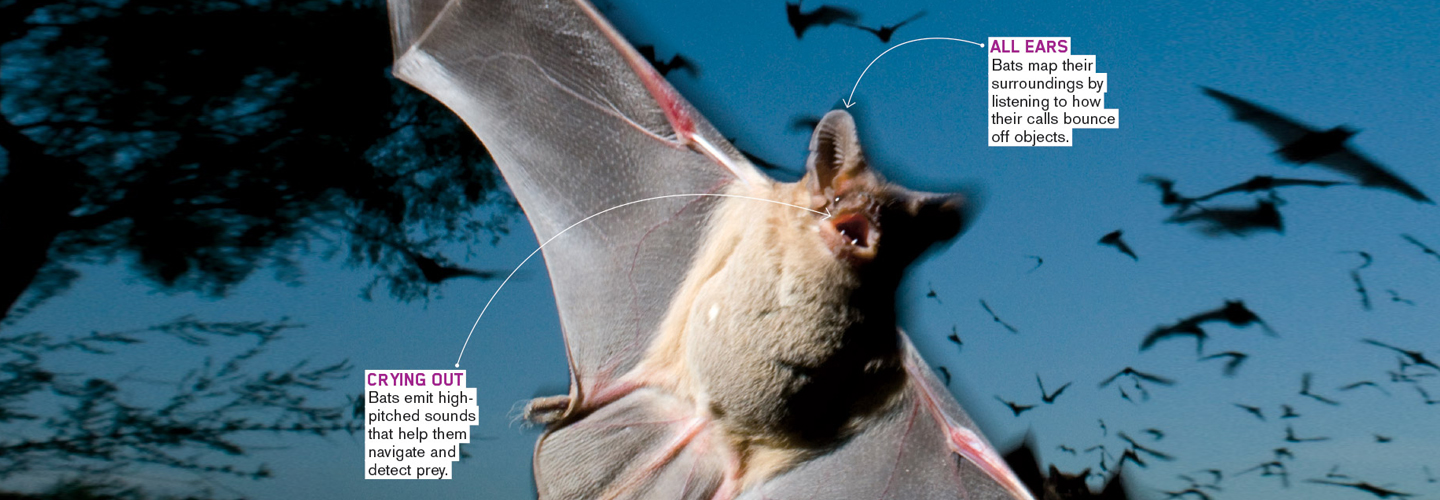Dusk falls on a dense forest in China’s Shandong province. As the sun dips below the horizon, hundreds of horseshoe bats swoop from the mouth of a cave. They dart across the dark sky, nabbing insect after insect. Before the sun rises the next morning, each bat will have eaten as many as 8,000 bugs—without bumping into a single tree or colliding with another bat. They accomplish this feat by using echolocation, a sixth sense that allows them to “see” using sound waves.
The bats navigate with high-pitched squeaks, many of which humans can’t hear. By listening to how their calls reflect, or bounce, off objects, they can map their surroundings. It’s an ability no human technology comes close to matching. But Rolf Mueller wants to change that.
Mueller is a mechanical engineering professor at Virginia Tech University in Blacksburg, Virginia. He’s attempting to design high-tech navigation systems that mimic bats’ amazing abilities. These systems could, for example, enable drones to maneuver in dark, cramped spaces like disaster zones more easily.
Dusk falls on a dense forest in China’s Shandong province. The sun dips below the horizon, and hundreds of horseshoe bats swoop from the mouth of a cave. They dart across the dark sky. As they fly, they nab insect after insect. Before the next morning, each bat will have eaten as many as 8,000 bugs. And they’ll do it without bumping into a single tree or hitting another bat. They perform this feat by using echolocation. This sixth sense allows them to “see” using sound waves.
The bats find their way with high-pitched squeaks. Humans can’t hear many of these bat calls. The flying creatures listen to how their calls reflect, or bounce, off objects. That way, they can map their surroundings. No human technology comes close to matching this ability. But Rolf Mueller wants to change that.
Mueller is a mechanical engineering professor at Virginia Tech University in Blacksburg, Virginia. He’s trying to design high-tech navigation systems that imitate bats’ amazing abilities. These systems could be used in drones, for example. They would help these devices to find their way through dark, cramped spaces like disaster zones more easily.

